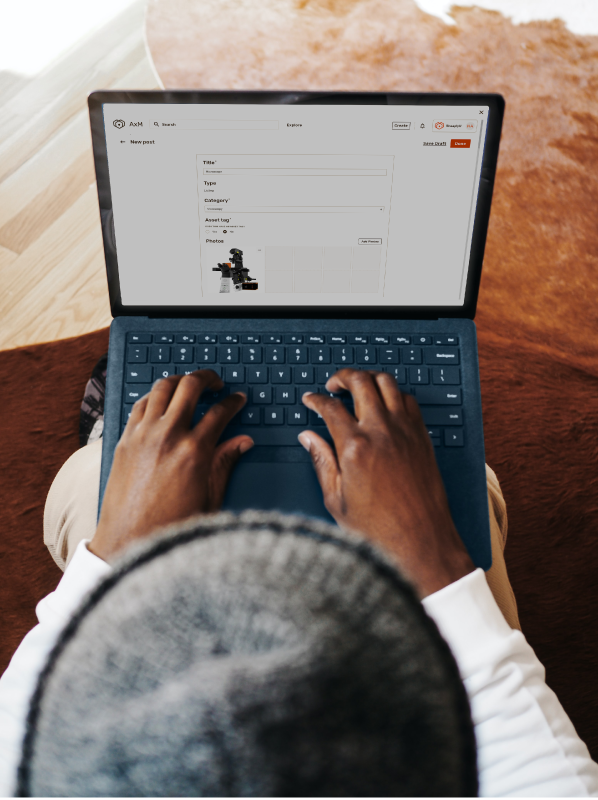Rheaply Asset Management Tool Targets Reuse

Increasingly, organizations are adopting sustainability goals, many of them focused on recycling. Though recycling is important, reuse is higher on the Environmental Protection Agency’s waste management hierarchy. Yet many organizations, even those trying to prioritize sustainability, have a supply of valuable unused assets that stockpile at their sites or end up in landfills.
So Rheaply, an asset management tech company, has come up with a way to get these assets back in circulation.
The Chicago-based operation is working to scale the circular economy with a cloud-based platform that enables organizations to sell, rent, or buy used equipment and other resources.
The goal is to combine a resource-sharing network with a user-friendly asset management platform for companies with sustainability goals.
Organizations can post items that they no longer need to make available within their own organization or that they would like to offer to other organizations. So idle materials and would-be waste find a useful home, reuse becomes a priority, and companies avoid double-buying or otherwise investing unnecessarily in capital.
Tom Fecarotta, vice president of external affairs and marketing at Rheaply, describes the system, called Asset Exchange Manager (AxM), as a tailored resource management tool and preferred network that offers a streamlined and circular resource platform. The majority of its 6,000-plus users are universities, biopharma and biotech companies, technology companies, and government entities.
A main selling point, according to Fecarotta, is that users have the ability to get a true sense of an item’s value.
“Old systems track resources that devaluate over time and don’t have a way to discern the current value to the rest of the community,” he says. “But we have a robust reporting section to understand recaptured value.”
For instance, says Fecarotta, users input fair market value as well as sustainability metrics such as avoided weight sent to landfill.
The platform was designed to work from any device and to be scalable and easy to understand and use.

“We want to make sure that all resources within organizations are utilized and accessible to large populations to retain the value of that resource,” says Fecarotta.
Another design focus besides the value-reporting feature was the ability to give users full control over preferences, such as item category and user group affiliations, to set a structured reuse circle.
There is also flexibility regarding whom organizations can admit to share with and sell to. Companies can set administrative controls to assign users desired access to the system.
Rheaply says its network has helped divert 14.5 tons of waste from landfills and has collectively saved organizations $1.3 million, almost exclusively in 2019. With specific regard to plastics, the network has saved over $300,000 by diverting plastic products from landfills.
Sam Light, assistant professor of microbiology at the University of Chicago, has found the platform to be both a cost saver and a waste saver, though waste reduction was his department’s primary motivation for tapping into this resource.
Prior to getting set up on Rheaply, Light and his lab team were acquiring scientific supplies exclusively through conventional vendors.
Now they look for items on the platform first, and not only have they cut waste and costs, but they have been able to cheaply acquire some supplies that otherwise wouldn’t have been a top priority.
“When it comes to disposability and excessive packaging, acquiring scientific supplies is particularly frustrating,” Light says. “I like that Rheaply provides an economical and sustainable alternative. Hopefully, this approach can help promote a culture change that will make a broad impact.”
Chris Weber, associate professor in the department of pathology at the University of Chicago, has tapped into Rheaply to redistribute lab items that are no longer needed.
“My lab’s funding is limited, so it has worked well for me,” says Weber, who estimates that he has saved thousands of dollars.
Then there is the sustainability focus. “Medical research does a lot of good for humans, but I am always troubled that it can hurt the environment,” says Weber. “Thus, I am looking for anything to minimize this. The Rheaply platform is a good way to redistribute unwanted equipment to labs that need it, and in doing so prevent the equipment and supplies from ending up in landfills.”
To take its concept further, Rheaply recently offered a $1,000 scholarship for anyone with a circular economy idea for reuse and waste reduction, and the company recently secured $2.5 million to further invest in the platform and to build out its engineering, product development, and marketing teams.
About the Author
You May Also Like




.png?width=300&auto=webp&quality=80&disable=upscale)